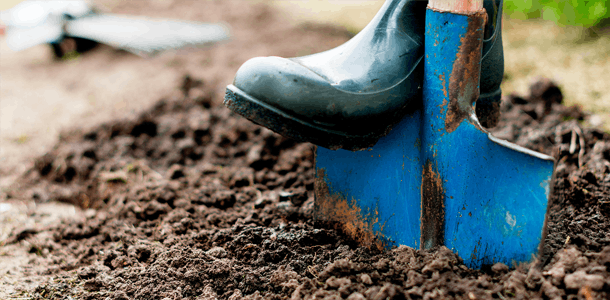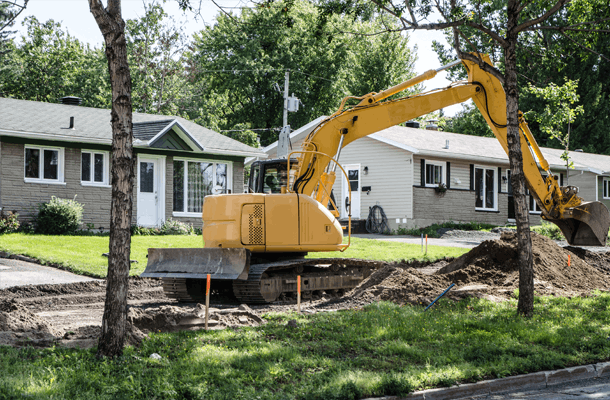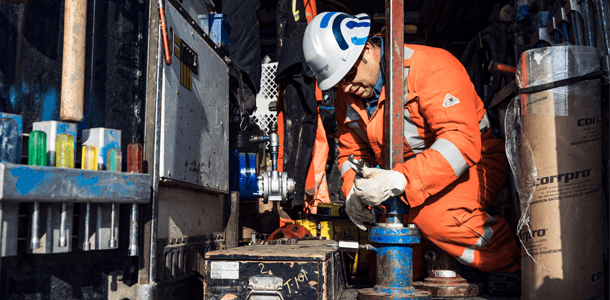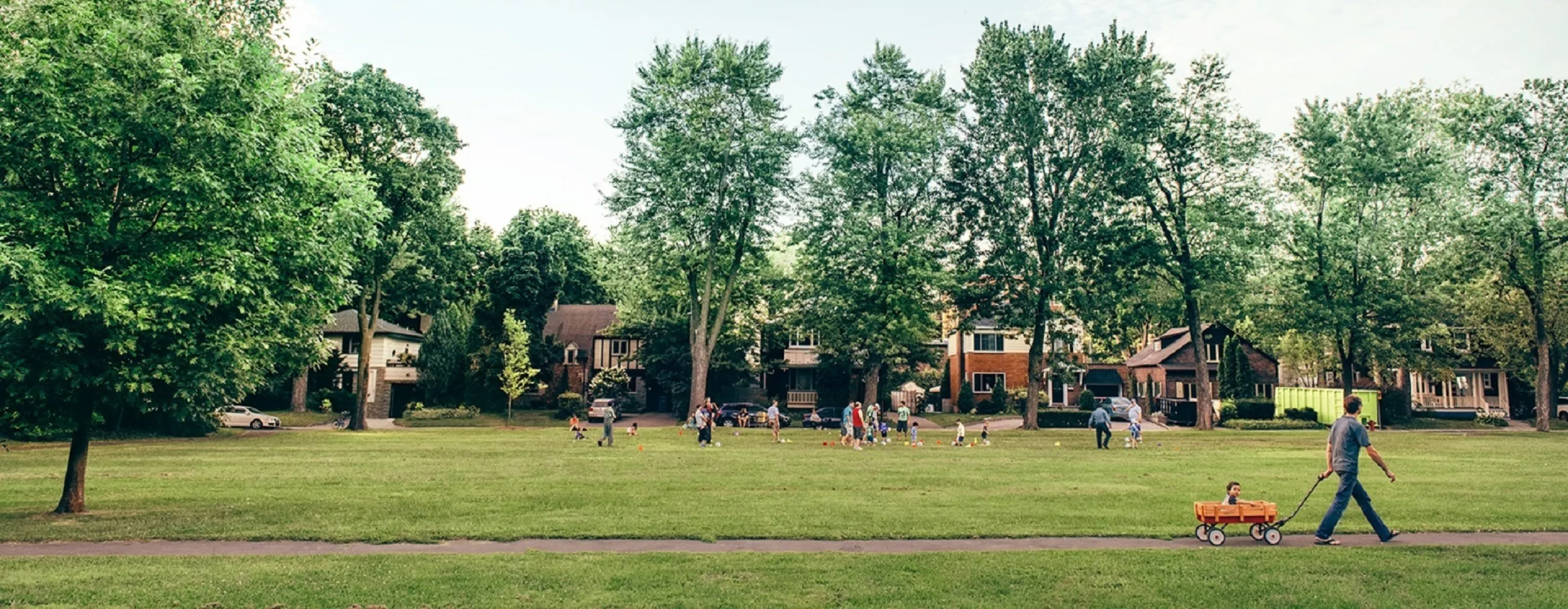Did you know that three-quarters of the breaks to underground pipes are caused by an error or negligence of the people doing the excavating? Around your house, there may be essential underground systems that you and your neighbors rely on, including gas lines, power lines and television cables.
Individual
Contractor
Before starting any work that calls for digging, be it to install a pool, fence or patio, follow these steps:

- Submit a locate request to Info-Excavation online or by calling 1-800-663-9228. It’s simple and free!
- Have your localization plan on hand before you start your work. Read it carefully, as there may be additional instructions before you begin.
- Find or mark the location of the pipe on the ground, according to your localization plan. Keep this marking in place for the entire duration of your work.
- Dig by hand in the buffer zone (i.e., 1 metre on either side of the pipe).
You’ve hired contractors to do the work? Ask them to perform the necessary verifications or forward them the locate report you received. Every broken pipe requires the fire department and Énergir’s emergency service to intervene. See our document to interpret localization plans and steps to be respected when working near natural gas networks.

Before starting any excavation work on your construction site, such as for street or underground infrastructure repairs, follow these steps:

- Submit a locate request to Info-Excavation online or by calling 1-800-663-9228. It’s simple and free!
- Have your localization plan on hand before you start your work. Read it carefully, as there may be additional instructions.
- Locate Énergir’s marking or mark the location of the pipe on the ground, according to your localization plan. Keep this marking in place for the entire duration of your work.
- Use a soft excavation method (shovel, hydro excavation, vacuum excavation) in the buffer zone (i.e., 1 metre on either side of the pipe).
You can use our prevention sheet, developed jointly with the CNESST, to ensure that you have implemented all the best practices when working near the gas network.
Coordination of work
If you are intending to perform road work, please notify Énergir during the planning phase so the company can make improvements to its gas network at the same time. Better coordination of work activities will benefit all citizens.
See our document to interpret localization plans and steps to be respected when working near natural gas networks.

Individual
Before starting any work that calls for digging, be it to install a pool, fence or patio, follow these steps:

- Submit a locate request to Info-Excavation online or by calling 1-800-663-9228. It’s simple and free!
- Have your localization plan on hand before you start your work. Read it carefully, as there may be additional instructions before you begin.
- Find or mark the location of the pipe on the ground, according to your localization plan. Keep this marking in place for the entire duration of your work.
- Dig by hand in the buffer zone (i.e., 1 metre on either side of the pipe).
You’ve hired contractors to do the work? Ask them to perform the necessary verifications or forward them the locate report you received. Every broken pipe requires the fire department and Énergir’s emergency service to intervene. See our document to interpret localization plans and steps to be respected when working near natural gas networks.

Contractor
Before starting any excavation work on your construction site, such as for street or underground infrastructure repairs, follow these steps:

- Submit a locate request to Info-Excavation online or by calling 1-800-663-9228. It’s simple and free!
- Have your localization plan on hand before you start your work. Read it carefully, as there may be additional instructions.
- Locate Énergir’s marking or mark the location of the pipe on the ground, according to your localization plan. Keep this marking in place for the entire duration of your work.
- Use a soft excavation method (shovel, hydro excavation, vacuum excavation) in the buffer zone (i.e., 1 metre on either side of the pipe).
You can use our prevention sheet, developed jointly with the CNESST, to ensure that you have implemented all the best practices when working near the gas network.
Coordination of work
If you are intending to perform road work, please notify Énergir during the planning phase so the company can make improvements to its gas network at the same time. Better coordination of work activities will benefit all citizens.
See our document to interpret localization plans and steps to be respected when working near natural gas networks.

Depth of the natural gas lines
the same depth. While the pipes themselves do not move, the contours of the land where they are located may alter over the years. Check first by digging manually or with vacuum excavation equipment so as to avoid damaging any underground structures.
For more information and to know what factors you need to take into account when planning and carrying out your work, refer to the following guide .
It outlines the steps to follow and provides information on the technical requirements for protecting natural gas installations, thus ensuring public and worker safety.
What do you do if you damage a natural gas pipe during your work?
Immediately stop your work
- Let the natural gas escape; do not try to stop the leak.
- Move away from the leak.
Avoid flames and sparks
- Turn off heavy machine engines and all other motorized or electric equipment.
- Do not turn on any appliance near the leak – not even a cell phone or electricity switch.
- Do not smoke.
- If this service is not available in your area, call 1 800 361-8003 .
What do you do if you damage a natural gas pipe during your work?
Immediately stop your work
- Let the natural gas escape; do not try to stop the leak.
- Move away from the leak.
Avoid flames and sparks
- Turn off heavy machine engines and all other motorized or electric equipment.
- Do not turn on any appliance near the leak – not even a cell phone or electricity switch.
- Do not smoke.
Call 911
- If this service is not available in your area, call 1 800 361-8003.

Prevention basics
While natural gas is one of the safest and cleanest energy sources, it is nevertheless important to follow the basic rules of prevention, maintenance and installation for natural gas equipment.


